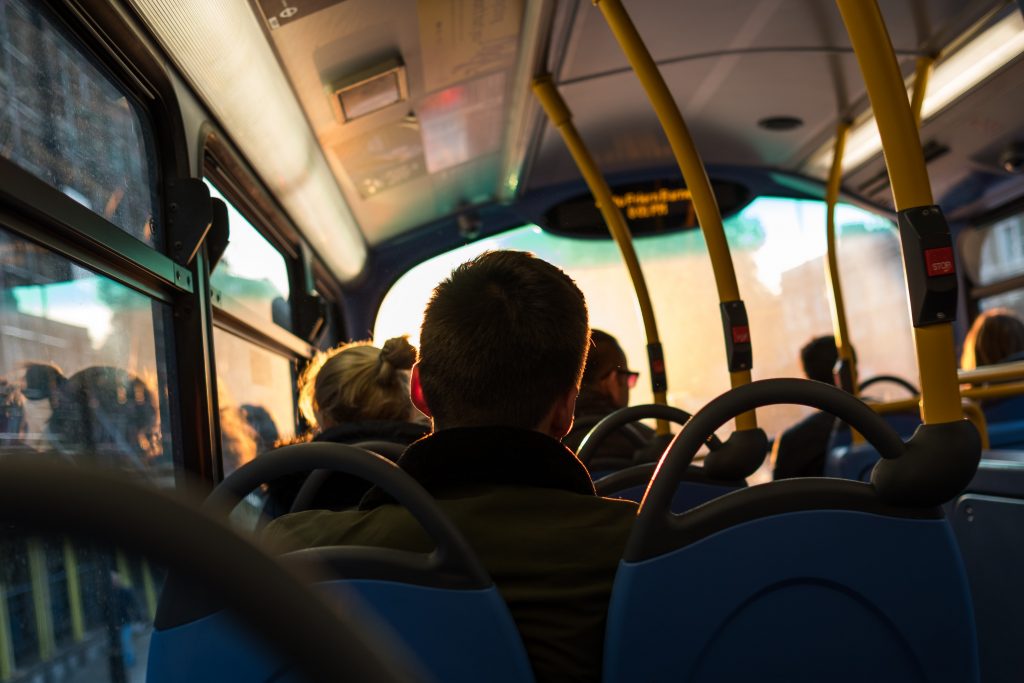Over the last twelve months, passengers have been steadily returning to public transport as employees have increasingly been encouraged back to their workplaces. In the UK, for example, Transport for London has reported that the number of journeys made on the Underground has returned to 90% of pre-pandemic levels. Much of the rise is attributed to home workers travelling to offices, but statistics also indicate that more people are using public transport for shopping trips or to visit attractions and entertainment venues than before the pandemic, says Aaron White is the business development director UK for Cubic Transportation Systems.
New routes already making a difference
The new Elizabeth line has been welcomed by London commuters, accounting for 150 million journeys in its first year, with up to 600,000 of those taking place daily on weekdays. From an economic perspective, the project has been responsible for creating 55,000 jobs, and it continues to support new house building schemes, employment, and economic growth across the region.
The return to bus usage countrywide has lagged a little behind rail so, to continue to support the public throughout the cost-of-living crisis, the £2 cap on bus fares in England has been extended again until the end of October. The cap applies to more than 130 bus operators nationally and will rise in November to £2.50 (€2.88) for 12 months before prices are reviewed again.
The backbone for economic revival


While public transport has been getting back onto a sure footing, the UK’s Trades Union Congress (TUC) has released a timely report that advocates radical investment in the sector to unlock a £50 billion (€57.57 billion) annual boost to the economy. This would generate 140,000 direct jobs in public transport and help cut car use by 20%. It sets out how a re-invigorated public transport network could provide the backbone for the UK’s economic revival. At the same time, the decarbonisation benefits would be substantial and bring major improvements for health, social well-being, and quality of life.
It represents an alternative green strategy to the UK government’s approach to travel which centres around electric vehicles (EVs). Often heralded as the answer to pollution, focusing heavily on the switch to EVs faces a multitude of challenges in the pursuit of net zero. While eliminating dependency on fossil fuels is vital, an EV is still taking up valuable space on roads and contributing to congestion. Without appropriate investment in the public transport infrastructure, there will need to be a substantial increase in EV production to fill the gap; this will necessitate more roadbuilding.
Analysis shows that if this happens, it will cancel out 80% of the carbon savings over the next 12 years. To further exacerbate the problem, if the use of EVs reaches 80% by 2050, it would require an additional 150 gigawatts of electricity to charge them, which risks offsetting the positive climate gains from replacing fossil fuels.
In addition to the charging issues, EVs remain difficult to manufacture on a commercially viable basis and are currently largely unaffordable for the mass market. Unless this changes in the near future, it will effectively scupper the government’s ban on selling petrol and diesel vehicles by 2030. Pursuing a transit-first policy is the best way forward to cut vehicle dependency and shift travellers on to trains, buses, and trams. Reducing private car use and reclaiming valuable road space for better footpaths for pedestrians, new cycle ways and rapid transit lanes for buses, would make cites and the countryside healthier and sustainable for future generations.
With the right supporting tools in place, passenger behaviour can be changed or, at least, nudged in the right direction to make a positive impact on traffic and pollution. This is where technology comes into play in the form of digital mobility solutions.
Connecting the digital dots


Digital solutions combine IoT (internet of things), AI (artificial intelligence) and modern apps to provide innovative services that connect and mange public transport systems to improve efficiency and customer satisfaction. Linking previously siloed transport data across the mobility network enables regional and national stakeholders to collaborate effectively and make informed decisions about the development and management of the whole ecosystem.
Harvesting data from multiple sources, such as ticketing systems, toll booths, road traffic cameras and sensors, enables total visibility in real-time of network demand and bottlenecks. This means that transit managers can plan for improved efficiency and introduce flexible, adaptable, and responsive incentives to optimise traffic and encourage passengers to choose the most sustainable option. As an example of how this might influence real-time decision-making, dynamic congestion pricing could be used to influence passengers and reduce traffic on days with poor air quality.
For the benefit of the traveller, digital mobility solutions connect everything from local rail and bus times, to ridesharing options, and traffic updates, in one easy-to-use, coordinated journey plan. Across the ecosystem further enhancements can be deployed to improve the customer experience, such as integrated ticketing which can be accessed through a wide choice of travel media according to the user’s preference. This incorporates management of fare policies, products, and pricing. It ensures that the traveller gets the best value and most seamless journey, by providing automatic journey construction, fare determination, capping calculations, and trip correction.
Making digital mobility a reality
The technology needed to enable digital mobility already exists and is in use today. The necessary tools to provide real-time, coordinated, and integrated mobility across multiple transport modes can be deployed through infrastructure upgrades and cloud-based solutions. Putting the foundations in place for services like unified account-based ticketing and payment which is interoperable between all transit options, is no longer a pipe dream or prohibitively expensive.


Recovery from the global pandemic was always going to be complex on so many levels, and while it looks like the UK will narrowly avoid a recession this year, growing the economy will require a balance of commercial and sustainability initiatives. Investing significantly more in public transport could provide the springboard needed for economic growth, as well as underpinning the government’s ambition to deliver a genuinely world-leading green agenda.
The author is Aaron White is the business development director UK for Cubic Transportation Systems.
About the author
Aaron White is the business development director UK for Cubic Transportation Systems. He has worked in the rail industry for nearly two decades. Before joining Cubic in 2022, he was part of Rail Delivery Group Smart Ticketing and Retailing strategy team, where he was responsible for Barcode ticketing and the development of industry agreed customer proposition and delivery of PAYG ticketing.
Comment on this article below or via Twitter: @IoTNow_OR @jcIoTnow
- SEO Powered Content & PR Distribution. Get Amplified Today.
- PlatoData.Network Vertical Generative Ai. Empower Yourself. Access Here.
- PlatoAiStream. Web3 Intelligence. Knowledge Amplified. Access Here.
- PlatoESG. Automotive / EVs, Carbon, CleanTech, Energy, Environment, Solar, Waste Management. Access Here.
- BlockOffsets. Modernizing Environmental Offset Ownership. Access Here.
- Source: https://www.iot-now.com/2023/07/19/133198-public-transport-investment-a-viable-and-sustainable-route-to-economic-recovery/
- :has
- :is
- :where
- $UP
- 000
- 12
- 12 months
- 2022
- 2030
- 2050
- 50
- a
- About
- accessed
- According
- Accounting
- across
- addition
- Additional
- advocates
- again
- agenda
- AI
- AIR
- All
- already
- also
- alternative
- always
- ambition
- an
- and
- annual
- answer
- approach
- appropriate
- apps
- ARE
- around
- article
- artificial
- artificial intelligence
- AS
- At
- attractions
- author
- Automatic
- avoid
- back
- Backbone
- Balance
- Ban
- basis
- bbc
- BE
- been
- before
- behind
- below
- benefit
- benefits
- BEST
- Better
- between
- Billion
- boost
- booths
- bring
- Building
- bus
- Buses
- business
- business development
- but
- by
- cameras
- CAN
- cap
- car
- carbon
- centres
- challenges
- changed
- Changes
- charge
- charging
- choice
- Choose
- Climate
- CO
- collaborate
- combine
- comes
- commercial
- commercially
- commuters
- complex
- congestion
- Congress
- Connect
- construction
- continue
- continues
- contributing
- coordinated
- could
- Creating
- crisis
- Currently
- customer
- customer experience
- Customer satisfaction
- Cut
- cycle
- daily
- data
- Days
- decades
- decarbonisation
- Decision Making
- decisions
- deliver
- delivery
- Demand
- Dependency
- deployed
- determination
- Development
- diesel
- difficult
- digital
- direct
- direction
- Director
- dream
- dynamic
- easy-to-use
- Economic
- Economic growth
- economic recovery
- economy
- ecosystem
- effectively
- efficiency
- Electric
- electric vehicles
- electricity
- eliminating
- employees
- employment
- enable
- enables
- encourage
- encouraged
- end
- England
- enhancements
- ensures
- Entertainment
- Ether (ETH)
- EV
- everything
- example
- exists
- expensive
- experience
- faces
- fill
- First
- flexible
- focusing
- For
- form
- Forward
- fossil
- fossil fuels
- Foundations
- from
- fuels
- further
- future
- Gains
- gap
- generate
- generations
- getting
- Global
- global pandemic
- going
- Green
- Group
- Growing
- Growth
- happens
- Have
- he
- Health
- healthier
- heavily
- help
- Home
- House
- How
- HTML
- HTTPS
- if
- Impact
- improve
- improved
- improvements
- in
- Incentives
- incorporates
- Increase
- increasingly
- indicate
- industry
- influence
- informed
- Infrastructure
- initiatives
- innovative
- integrated
- Intelligence
- Internet
- internet of things
- interoperable
- into
- introduce
- investing
- investment
- iot
- Iot (internet of things)
- issues
- IT
- ITS
- Jobs
- joining
- journey
- Journeys
- jpg
- largely
- Last
- least
- levels
- Life
- like
- Line
- linking
- little
- local
- London
- longer
- LOOKS
- made
- major
- make
- Making
- management
- Managers
- many
- Market
- Mass
- max-width
- means
- Media
- might
- million
- mobility
- Modern
- modes
- months
- more
- most
- much
- multiple
- multitude
- National
- nationally
- Near
- nearly
- necessary
- Need
- needed
- net
- network
- New
- news
- next
- no
- November
- now
- number
- october
- of
- offices
- often
- on
- ONE
- operators
- optimise
- Option
- Options
- or
- out
- over
- pandemic
- part
- payment
- People
- perspective
- pipe
- Place
- plan
- plato
- Plato Data Intelligence
- PlatoData
- Play
- policies
- policy
- Pollution
- poor
- positive
- previously
- Prices
- pricing
- private
- Problem
- Production
- Products
- project
- proposition
- provide
- providing
- public
- pursuit
- Putting
- quality
- radical
- Rail
- rapid
- Reaches
- real-time
- recession
- recovery
- reduce
- reducing
- region
- regional
- released
- remain
- Reported
- Reports
- represents
- require
- responsible
- responsive
- retailing
- return
- returning
- reviewed
- right
- Rise
- risks
- road
- roads
- Route
- routes
- same
- satisfaction
- says
- schemes
- seamless
- sector
- Selling
- sensors
- Services
- Sets
- shift
- Shopping
- Shows
- significantly
- smart
- So
- Social
- Solutions
- Sources
- Space
- stakeholders
- standard
- statistics
- Still
- Strategy
- substantial
- such
- support
- Supporting
- sure
- Sustainability
- sustainable
- Switch
- Systems
- taking
- team
- Technology
- than
- that
- The
- the UK
- their
- Them
- There.
- things
- this
- this year
- those
- Through
- throughout
- ticketing
- time
- times
- to
- today
- tools
- Total
- traffic
- trains
- transit
- transport
- transportation
- travel
- trip
- Uk
- underpinning
- unified
- union
- unlock
- until
- Updates
- upgrades
- Usage
- use
- used
- using
- Valuable
- value
- vehicle
- Vehicles
- venues
- via
- viable
- visibility
- Visit
- vital
- was
- Way..
- ways
- welcomed
- WELL
- which
- while
- whole
- wide
- will
- with
- without
- worked
- workers
- would
- year
- years
- zephyrnet
- zero












